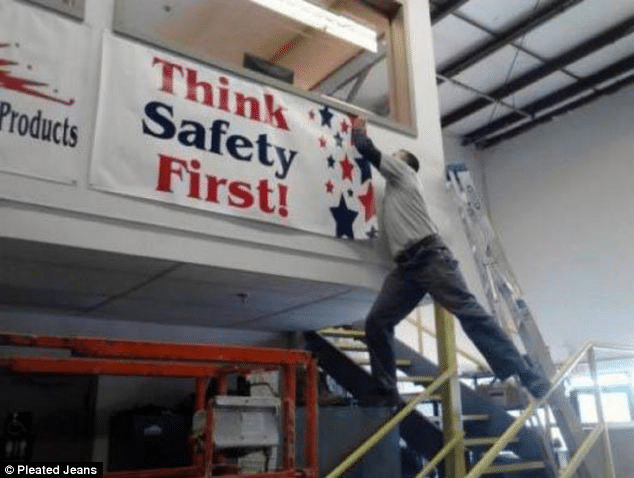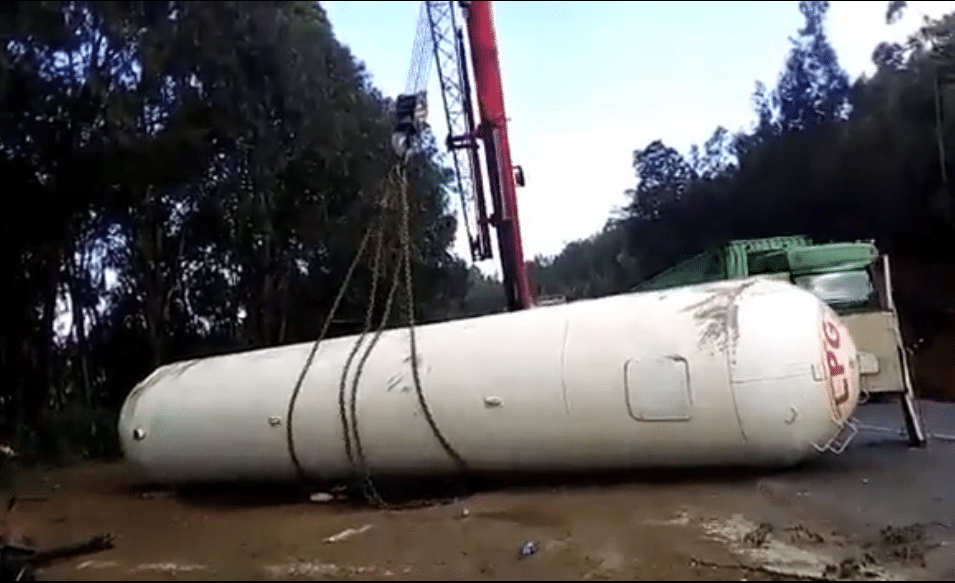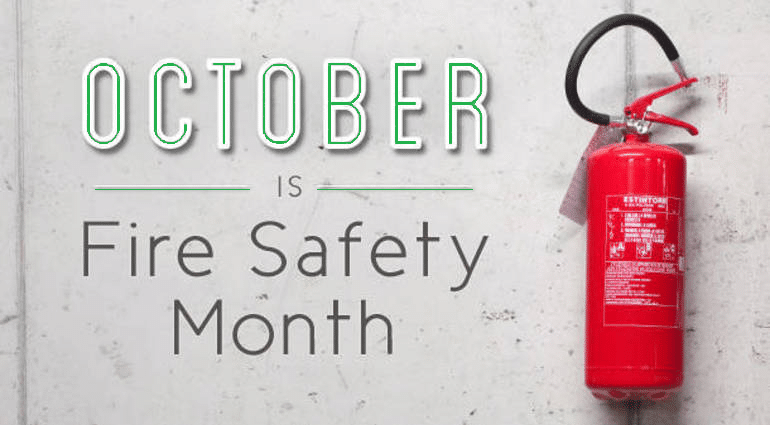DIGITISATION OF OSH MANAGEMENT
Every management system requires some form of documentation, after all, if it isn’t documented then it wasn’t done. OSH management systems are no different. Good record keeping is paramount to the success of any system as it forms a basis for determining current performance and in turn improvement opportunities. However, all these documents present challenges of data management. Access to critical information is a tedious task of sifting through mounds of paperwork which is both time consuming and inefficient. There is a great migration from paper to digital platforms due to accessibility of mobile technology which has been accelerated by the global Covid-19 pandemic.
Digitisation in this context can be defined as information that can be processed by a computer. The primary source of this information can be digital (e.g. email, Word doc, Excel spreadsheet, eForms) or converted from hardcopy (e.g. scanned documents). As a country, the government has made efforts to digitise many services through the E citizen platform. There is also the much publicised digitisation of Land Registry to improve service delivery and transparency on the thorny issue of land.
For OSH management, digitisation improves monitoring of key performance indicators which increases performance of an organisations core business through:
· Elimination data capture errors
· Creating audit trails
· Speeding up time required to close recommendations
· Verification of the data source
· Improving accessibility to information/ transparency
· Integrating all business functions to the OSH management systems
· Automated measure of success of the Management system
The above advantages are realised by the key features exhibited by OSH management software which include:
Dashboard: As in a vehicle, the dashboard feature provides summary of the performance (or non performance) of all required analytics. This is based on the data captured from all key performance indicators.
OSH Compliance Matrix: This feature enables safety personnel to be up to date with various statutory requirements e.g. renewal of operational licenses, Periodic Plant Examinations etc. Digital platforms notify the user of any requirement that is due to facilitate early planning. This works to ensure compliance with OSH regulations and tendering requirements.
PPE Management: This keeps an inventory of the correct PPE required in the workplace. The user is kept informed about the variables which ensure every piece of PPE issued to workers is indeed personal and not one size fits all.
Chemical Management: Other than inventory management, Chemical management encompasses the Storage, Handling, use and proper disposal of chemicals. The SDS for all chemicals can be accessed with this feature and this aims to meet regulatory requirements too. Good chemical management will ensure efficient and safe use of chemicals and cut wastage.
OSH Inspections: Workplace inspections form a core of any OSH Management system. They help identify hazards and existing controls in order to inform additional corrective measures. A good OSH management software must include customisable inspection checklists. This enable the end user to modify the parameters to fit their workplace. The data collected is easily sharable and this promotes fast turnaround of highlighted recommendations. With mobile Apps, workers are also able to report hazards in real time to a centralised database thus empowering them to be OSH champions.
Training: Training is at the core of any management system. It is important for organisations to build capacity of the employees to empower them execute the corporate vision. A good software should enable the user prepare material, track, schedule, undertake and assess the effectiveness of training undertaken.
Incident Management: This forms part of lagging indicators. A good software must include an incident analysis tool which automatically generates incident reports with the required degree of detail.
Integration: A good software is able to cross share information amongst all users to give a wholesome view of the organisation. This breaks down any geographical barriers that hinder information sharing in hard copy format.
The benefits of a good OSH management system warrant a full article, however there is no doubt digitisation helps in its implementation. Seeing how the above features form a job description for most OSH practitioners, it is important that individuals keep abreast of the disruptive technologies that are changing how OSH is managed. Early adoption will ensure smooth transition and ultimately greater efficiency in performing duties.
The top management should be aware of the organisations capacity to transition into digitisation and to meet or exceed the requirements both in skill and equipment.
How have you integrated digitisation into your occupation? Contribute to the discussion on the comment section below.
Works Cited
Change Factory. (n.d.). The Benefits of Digitisation. Retrieved from Change Factory: https://www.changefactory.com.au/our-thinking/articles/benefits-digitisation/
Yonis, S. (2020, May). neo EHS. Retrieved from neoehs.com: https://www.neoehs.com/
FIRE PREVENTION MONTH 2020
I usually ask myself on whose authority we have certain months dedicated to specific causes. In the safety profession and fire safety to be specific, October is often designated as World Fire Prevention Month. Upon some light research, I discovered the origins of this trend to be in commemoration of the Great Chicago fire of 1871. This inferno persisted from 8th to 10th of October killing approximately 300 people and rendering 100,000 homeless. The damage at the time was estimated at 222 Million US Dollars which currently translates to 4.5 Billion US Dollars. To put this figure in context, the most expensive infrastructure project in Kenya, the SGR cost 3.6 Billion US Dollars.
Locally, we have had our fair share of fire disasters. The earliest documented fire disaster I’ve come across is the Faza settlement Fire in Lamu. This occurred in 1586 when the Portuguese punished the residents for collaborating with the Turkish settlers. Fast forward to 2009 when we saw two accidental fires occurring days apart.
It was Wednesday 29th January 2009 in the afternoon, when a power outage would affect the Central Business District. A generator in Nakumatt Downtown would then roar to life providing the establishment with the much needed electrical energy. It is alleged that the generator malfunctioned and the resulting sparks led to the ignition of the diesel stored within the generator room. This fire spread quickly and it took the fire fighters over 24 hours to get it under control. The disaster led to 29 confirmed deaths and 47 Missing persons.
Three days later another disaster followed. In what started as a road accident with no fatalities, quickly morphed into a tragedy that would eventually claim more lives than the Nakumatt Downtown fire. A fuel tanker ferrying 50,000 Litres of unleaded petrol to South Sudan overturned. As it had happened many times before during accidents, residents in Shachangwan scrambled to the scene to help with rescue operations and thereafter salvage the resulting spoils. With no injuries reported from the accident and the value of the commodity in transit, the locals were quick to siphon the petrol from the tanker. Before long, the tanker burst killing 123 people, 98 of who were burnt beyond recognition.
The above serve to highlight how quickly a fire can go from a small flame to an uncontrollable inferno. It is therefore important for members of the general public to have some basic awareness of how fires start and spread. A fire conscious society will be able to appreciate the importance of fire prevention practices and cooperate with authorities to keep the fire safety infrastructure functional. I believe every adult in our nation should at the very least be aware of the following;
Basic Definitions:
· Fuel: In fire safety a fuel is ANYTHING that can catch a fire. e.g. Paper, wood, Petrol · Heat: It is what starts/ignites a fire e.g. Flame, Sparks
For a fire to occur, there has to be a source of heat, something that can burn and finally Oxygen gas, the part of air that supports burning. These 3 elements are referred to as the fire triangle. Remove any one of the elements and a fire will not occur. This is the basis of fire prevention, keep items that can burn (Fuel) away from heat sources that can ignite them.
In the event a fire occurs it is important for the general public to know how to make use of available extinguishers to put out the fires. This is going on the assumption that a fire safety professional was consulted before installation of such equipment so as to match the class of fire to the best suited extinguishing agent.
The principal of using a portable extinguisher is summarised in an easy to remember acronym, “PASS”.
Evacuation is also an important element of fire safety. The general public should know the importance of maintaining passage ways clear of obstruction. Fire rescue drills should be normalised especially in the urban areas to raise the fire safety profile of the average Kenyan.
The central government has done a lot to promote fire safety in the Workplace by creating legislation to which all workplaces are required to comply. This is the Factories And Other Places Of Work (Fire Risk Reduction) Rules 2007. County governments also have by laws that aim to promote fire safety. The missing link as mentioned before lies in constantly sensitizing the general public, a majority of whom are in informal employment. Fires, like most emergencies, seem to creep up on us. However the signs of an imminent disaster are usually easy to recognise beforehand.
I take it as a challenge for myself and extend it to all safety professionals to spread the basic principles of fire safety to members of the communities we are a part of.
We can start by distributing this article outside the safety profession circles. Lastly, share your ideas and personal initiatives for creating awareness on fire safety in the comments section.
Fire safety literacy is an essential skill in any organized society.
References
EKISA, P. O. (2018). AN ASSESSMENT OF THE NATUREOF PREPAREDNESS AND RESPONSETO HAZARDS IN KENYA – A FOCUSON FIRES, FLOODS AND EPIDEMICS. Kakamega: Masinde Muliro University of Science & Technology.
First Alert. (2020). Fire Prevention month 2020. Retrieved from First Alert: https://www.firstalert.com/community/safety-corner/fire-prevention-month/
Owaahh. (2014). 7 Most Destructive Fire Disasters in Kenya’s History. Retrieved from Owaahh: https://owaahh.com/7-most-destructive-fires-in-kenyan-history/
World Day for Safety & Health at work, April 28th
To Occupational Safety and health practitioners, this day is as big as Christmas if not bigger. However, most people I interact with clients, friends, relatives etc. have never heard of it. The objectives of this article are to create awareness on the day, unpack this year’s theme and to give a brief history on the days origins.

We cannot adequately understand the importance of this day without first knowing the history of the Organisation that birthed it, the International Labour Organisation (ILO). This United Nation Agency was formed in 1919 to bring together Governments, Employers & Employees (tripartism) to set labour standards, develop policies and devise programmes promoting decent work for all women and men. Currently, there are 187 member States of which Kenya is included.

In 2003 the ILO begun to observe the World Safety Day in order to highlight the importance of prevention of accidents and diseases at work. They capitalised on their traditional strengths of tripartism mentioned earlier to enhance social dialogue amongst stake holders. The ILO being the global pillar for the promotion of Occupational Safety & Health resolved to use the day as an awareness tool to raise the political profile of OSH. It is important to mention that this date is also the International Commemoration Day for Dead and Injured Workers organized worldwide by the trade union movement since 1996.
The theme for 2021 is;
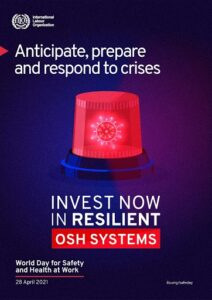
“Anticipate, prepare and respond to crises – Invest Now in Resilient Occupational Safety and Health Systems.” I am particularly excited about the theme as it ties in closely with Empiric Advisors Motto of “Enhancing Your (Business’) Bottom Line”.

Resilience can be defined as an organisation’s ability to rapidly adapt and respond to risks such as natural disasters, civil unrest, cyber-attacks, energy disruptions, among others. Besides the ability to face the consequences of a major incident, business resilience also includes the capacity of an organization to adapt and adjust to a new environment and new circumstances.
Effective Occupational Safety & Health Systems are those that reach into every facet of the company’s operations. An OSH Management system has the following components;
· Safety & Health Policy (Leadership Commitment)
· Planning ( How to execute/implement the policy)
· Arrangements (Who does what and how)
· Performance Measurements
· Continual Review
With the Covid – 19 Pandemic, organisations all over the world were shaken to their core. This virus has changed the world as we know it. Various measures to mitigate against its spread have altered the way work is done. Some of these mitigation measures have as a result created new risks in the workplace. The ILO will be looking to share insights on how both governments and companies can invest resources that will enable them withstand this and future crises. I am looking forward to the presentations and real world examples of outcomes on both ends of the spectrum.
Everyone is invited to participate in this year’s event by registering through this zoom link; https://ilo-org.zoom.us/webinar/register/WN_gQRpF6wtSyORi81Q_-3a3A
As I conclude my prelude to the main event, I would like to propose a linkedin challenge to make use of the new polling feature. Challenge a connection who is not a Health, Safety or Environment practitioner to ask their connections if they have ever heard of the world day for safety and health at work. I’m sure the ILO itself would love to see the results.
For now, I hope to E-see you all on the 28th of April 2021 if it is in God’s will.
References
ILO. (2021). About The ILO. Retrieved from ILO: https://www.ilo.org/global/about-the-ilo/lang–en/index.htm
Resilience Definition: What Is It, Meaning, Examples And Areas Of Use. (2020, June 20). Retrieved from YouMatter: https://youmatter.world/en/definition/definitions-resilience-definition-meaning-examples/#:~:text=Business%20resilience%20is%20a%20business,supply%20chain%20disruptions%2C%20among%20others.
U.N. (2021). World Day for Safety and Health at Work. Retrieved from United Nations: https://www.un.org/en/observances/work-safety-day#:~:text=In%202003%2C%20the%20International%20Labour,of%20tripartism%20and%20social%20dialogue.
HOUSEKEEPING

I enjoy drawing similarities of theories in other disciplines to safety, in this case there’s one in criminology referred to as the Broken Window Theory. It states that if a window in a building is broken and is left unrepaired, all the rest of the windows will soon be broken. This is because one un-repaired broken window is a signal that no one cares, and so breaking more windows costs nothing. We can draw a similar relationship between good housekeeping and safety culture maturity. When a workplace has a high standard of housekeeping, our first impression is usually that of good management of not only safety but all other elements of the business. Conversely, poor housekeeping gives an impression of poor corporate culture in which focus is placed on the bottom line at all costs.
Housekeeping entails more than just cleanliness and is an essential aspect for any safety management program. Poor housekeeping amplifies other hazards present in the workplace through;
· Tripping over uneven surfaces eg. Potholes,
· tripping over loose objects on floors, stairs and platforms
· being struck by falling objects
· slipping on oily, wet or dirty surfaces
· Impact against projecting, poorly stacked items or misplaced goods
· cutting, puncturing, or tearing of the skin on projecting nails or wires
A good housekeeping program promotes the orderly storage of goods and movement of items through the production cycle. This alone can improve efficiency of the work process which in turn offsets any costs involved in implementing the program. It is important to note that good housekeeping is not achieved but it is maintained.
An effective housekeeping program should capture the following elements,
Surfaces

Poor floor conditions are made up of a combination of spills, uneven surfaces, items on the floor, accumulation of dirt, poor carpeting amongst others. Floors should be kept free of the mentioned conditions to mainly reduce slips and trips. Another surface is the walls. Contrasting colours on walls warn of physical hazards and mark obstructions such as pillars. Bright Paint is also used to highlight railings, guards and other safety equipment. The program should therefore have a colour code to assign meaning to colours. Poorly maintained walls obscure the colour and therefore the warnings depicted might be difficult to interpret.
Gangways & Stairs

Depending on the operations, gangways should be wide enough to ensure safe passage of people and vehicles. Proper marking of designated gangways promotes their safe usage and discourages people from taking shortcuts through hazardous areas. The gangways and stairs should be maintained free of obstruction and should not be used for temporary storage of goods. This aspect is also highlighted in Fire Safety with respect to evacuation procedures.
Maintenance

From the above-mentioned broken window theory, we can deduce that maintenance may be the most important element of good housekeeping. A good maintenance program includes constant facility inspection and immediate remedy (Repair or Replacement) of any observed faults.
Dusting
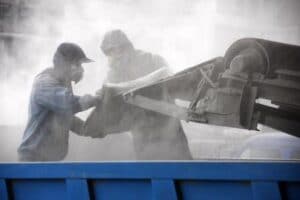
This seeks to prevent the accumulation of dust in the premises. In workplaces where dust exposure is high, it is recommended that the occupier undertakes an Air quality Survey. This will help ascertain the exposure levels and inform control measures. Dust affects visibility in the workplace. This is through accumulation in light fixtures and also atmospheric. In addition, Dust accumulation contributes to expensive equipment failure.
Spillage Control

Prevention of spills is the most effective mode of spill control. However when spills occur it is very important to ensure they are cleaned up immediately. The various materials used to contain the spillage should be well cleaned or disposed according to environmental guidelines.
Waste Disposal

Regular waste collection, sorting, and transfer to a disposal site contribute to good housekeeping. The program should ensure the provision of adequate disposal bins which are labeled to promote segregation.
All workers should be involved in the maintenance of good housekeeping especially when it comes to individual workstations. Training on housekeeping should be undertaken regularly to ensure workers safely handle the products available. Formal assignment of duties will further promote accountability for the effective running of the program.
Housekeeping issues are very common and for the most part, easy to fix. The main issue is the consistency of action that poses a challenge in maintaining good standards. What other elements of effective housekeeping do you use that can be added to my list? Comment below.
References
Canadian Centre for Occupational Health & Safety. (2018, June 4). Workplace Housekeeping – Basic Guide. Retrieved from CCOSH: https://www.ccohs.ca/oshanswers/hsprograms/house.html#:~:text=Housekeeping%20is%20not%20just%20cleanliness,fire%20hazards%20from%20work%20areas.&text=Good%20housekeeping%20is%20also%20a%20basic%20part%20of%20incident%20and%20fire%20prevention.
Trotto, S. (2015, July 1). 11 tips for effective workplace housekeeping. Retrieved from Safety+Health: https://www.safetyandhealthmagazine.com/articles/12470-tips-for-effective-workplace-housekeeping?page=2
Wikipedia. (2021, February 18). Broken windows theory. Retrieved from Wikipedia: https://en.wikipedia.org/wiki/Broken_windows_theory


